4 tips on which lights for a stretch ceiling to choose
When T. Edison invented the incandescent lamp, having a miracle of technology and a novelty in the house was considered a great luxury. Only about one and a half hundred years have passed since then, but humanity has become much more demanding. Just one light bulb or chandelier in the center of the ceiling is often not enough. Lighting began to play not only a functional, but also a decorative role, to emphasize the features of the interior, to divide the space into zones. This is a whole science! When it comes to ordinary ceilings, any fixtures can be used, but with tension structures it is a bit more complicated. Here it is necessary to take into account their features and try to maximize emphasize the beauty of the surface. It is time to figure out which lights for the stretch ceiling to choose, how to position them and which bulbs to use.
No. 1. What features of a stretch ceiling should be considered?
If you take into account some nuances, then with a stretch ceiling it will be possible to use lighting devices of any shape and type. Canvas tension structures made of fabric or film. The fabric is more resistant to temperature effects, but film with constant heating over 600C may turn yellow, crack, and lose elasticity.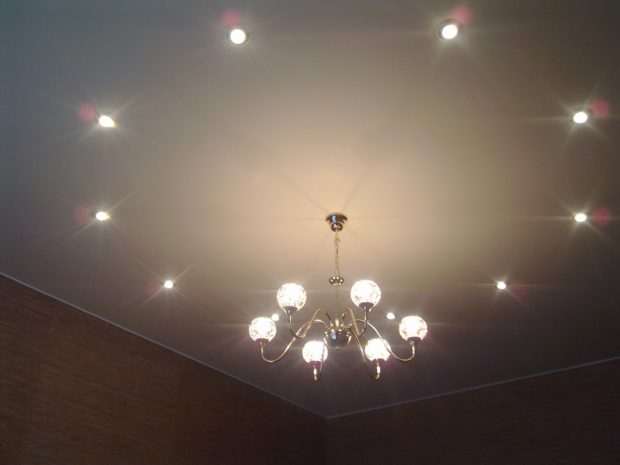
To stretch ceiling served as long as possible, when selecting fixtures, consider the following nuances:
- fixtures should give off a small amount of heat;
- better to use energy saving and LED lampswhich differ in the minimum heating during operation;
- if incandescent lamps are indispensable, then their maximum power should be 60 watts. The maximum power of halogen lamps is 30 W;
- for incandescent and halogen lamps, there is also a restriction on the distance from the ceiling surface - this is 30 cm, and preferably 40 cm.
Installation diagram all fixtures must be thought out in advance. In this case, it will be possible to effectively carry out preparatory work and mount all the necessary fasteners. The luminaires will not be attached to the canvas of the tensile structure, but to the main ceiling, and the necessary holes are simply made in the canvas itself, which are then carefully formed. Thermal insulating rings become an additional protection of the canvas from overheating.
No. 2. What kind of lights for a stretch ceiling are there?
All lamps that are used together with suspended ceilings can be divided into the following types:
- chandeliers;
- spot lighting;
- LED Strip Light;
- raster lights;
- ceiling "starry sky".
Chandelier in the center of the ceiling - This is a classic of the genre. It can be made in the form of a plate, be on a long suspension, or consist of several hanging shadesarranged in a row. If you plan to use incandescent or halogen lamps, remember safe power and distance. In addition, it is desirable that the design features of the chandelier are such that the ceiling with the lamps were directed sideways or down, but not at the ceiling. Use chandelier plates with stretch ceilings it is possible, but you will have to buy fluorescent or LED bulbs. In principle, when using lamps that do not heat up, lamp design it can be absolutely anything - good, the choice in stores is so huge that you can get confused and confused.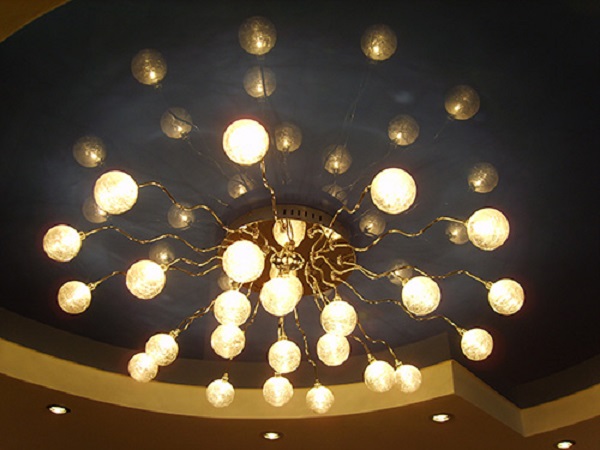
A problem may arise if you want to install a luxurious crystal chandelier on the suspension. The candle lamps of such a chandelier will almost hit the ceiling. Of course, you can install conditionally cold energy-saving lamps, but crystal looks best only under the light of ordinary incandescent lamps. The only way out is to increase the length of the suspension in order to achieve a safe distance between the lamps and the ceiling of 30-40 cm, but this is only possible when the ceilings in the apartment are quite high.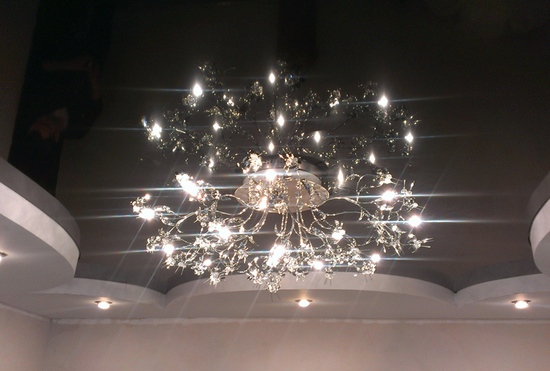
When, if you have a glossy ceiling installed, in which, as in a mirror, everything is well reflected, then when choosing a chandelier it is worth paying attention to how it looks from all sides, since the part that is usually not visible to us will be clearly visible in the reflection.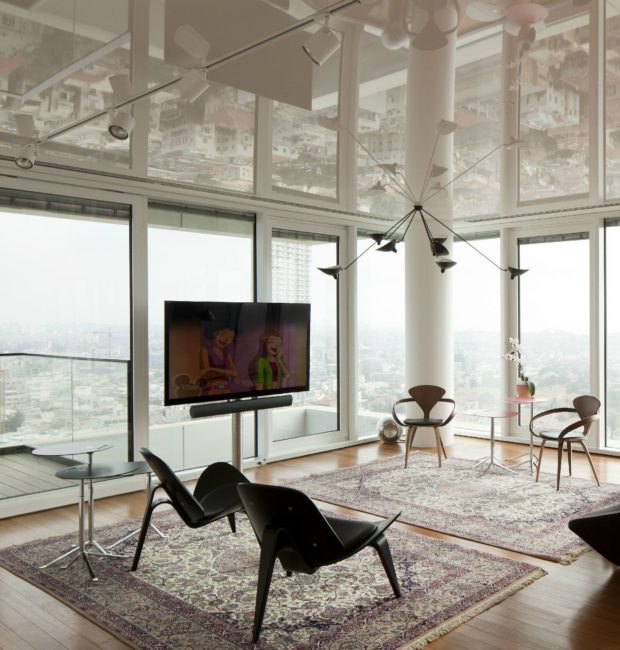
Spotlights and stretch ceilings have already become an inseparable pair, since their combination looks, indeed, very attractive. Such lamps can be used as main lightif there are a lot of them in the room, but usually they are installed to highlight some area in the room. Spotlights save when the ceiling height is critically low. They have a low angle of light scattering (about 30 degrees), therefore, for normal lighting of a room or part of it, it is necessary to install 1 device for every 1.5-2 m2 area. In shape and size, such lamps can be anything - the choice is extremely large.
Spotlights can be installed:
- above ceiling provided that a light transmitting film is used. Thanks to this arrangement, it is possible to achieve a soft illumination of the ceiling from above or a flicker effect, you can also create various lighting effects;
- at the level of the ceiling, when the lamp and the ceiling form one smooth, solid surface;
- slightly below the level when fixtures with a protruding bulb are used. If you choose the appropriate design, you can change the angle of incidence of light by tilting the lamp.

LED Strip Light It is used mainly for decorative purposes. It consumes a minimum of energy, gives a soft cozy glow and is usually mounted along the contour of the ceiling, between skirting board and ceiling or is used to focus on individual elements.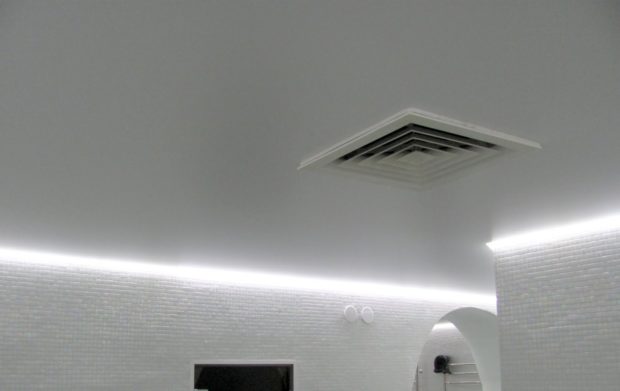
Another option for decorative lighting is the so-called "Starry sky". The technology allows you to perfectly simulate the glow and flickering of stars, so an incredible atmosphere is created in the room. Such lighting is realized thanks to fiber-optic filament-LEDs, which are connected to a light generator located above the tension structure. LEDs may not be output through the ceiling and project light onto the inner surface of the ceiling: during the day, the ceiling remains completely smooth, and magic sets in at night. Another option is to bring out the ends of the threads with LEDs. The most expensive option is to incorporate diodes into Swarovski stones, thanks to which the light begins to refract especially beautifully, perfectly imitating radiant stars.
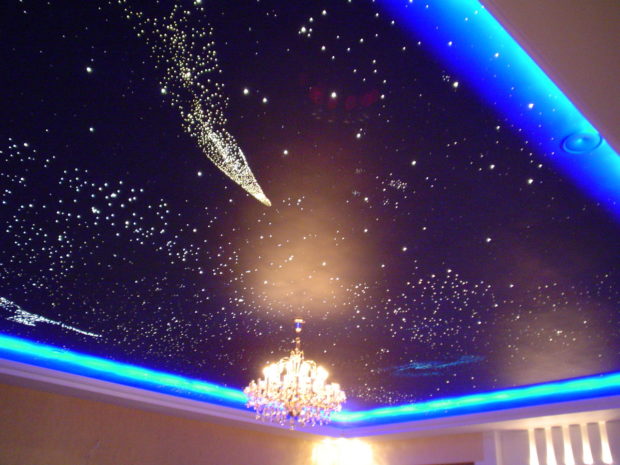
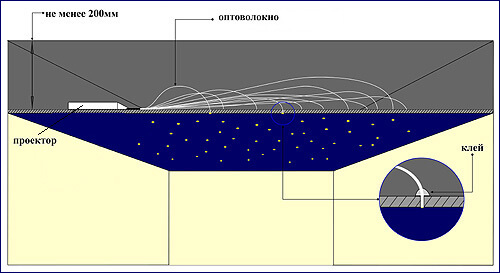
Separately, select raster lightswhich are easily recognizable by the characteristic cellular metal structure. Typically, such lamps are used in suspended ceilings, but sometimes they are also found in suspended structures, although they are still a rarity. This is a more office and strict option, which will be appropriate to look only in large rooms.
It is not necessary to dwell on only one type of lighting: a chandelier can be combined with a spotlight or LED strip, and spotlights can be installed together with a "starry sky".
No. 3. Type of fixture mounting
Installation of fixtures is done with your own hands or with the help of experts - it all depends on your skills and the complexity of the work.
Chandeliers are mounted in one of the following ways:
- ceiling option involves the installation of a reinforcing strap before mounting the canvas, then the lamp is attached to the base on screws. This is not a very popular option;

- hanging mount for installation of chandeliers is used more often. Before the installation of the canvas, you will need to fix the hook from the armature at the installation site of the future chandelier. After the tensioning structure is mounted, a chandelier is hung on the hook. A hole is made in the canvas in the appropriate place, which is then reinforced with a special ring.

Spotlights by installation method are:
- waybills fixtures. Before their installation, adjustable racks are mounted and the power supply is supplied. After the canvas is stretched, thermowells are installed that will impede heat transfer between the fixtures and the film. You can install rotary and non-rotary models, outwardly they will be slightly below the ceiling level;

- recessed fixtures are installed in a similar way, but at the same time form one plane with the canvas. Such products are distinguished by spring-type fastening: after the lamp is installed in a pre-prepared hole, the spring is straightened, which allows it to be pressed firmly against the ceiling. Externally, the lamp is decorated with a decorative overlay. For recessed luminaires, between the stretch and the main ceiling, a technical clearance of about 7 cm must be provided.

Number 4. Types of lamps, or Which light source is better
Luminaires in suspended ceilings can be supplied any light sources, but this does not eliminate the need to weigh the pros and cons of all options and choose the optimal one:
- incandescent lamps - the most uneconomical among all the others. They have a low efficiency, so most of the energy is converted into heat, which imposes restrictions on their use with film stretch ceilings. Such lamps are usually installed in hanging chandeliers, but you need to remember about the power limit: it is 60 watts, but some recommend using lamps no more powerful than 45 watts. Such lamps are usually not installed in spotlights, but if you have a fabric stretch ceiling, you can find a compromise and take a mirror-coated lamp;

- halogen lamps somewhat more economical than incandescent lamps, give a bright and intense light, but are limited by the color gamut of radiation. Such lamps emit less heat, serve twice as long as conventional incandescent lamps, but it is still better to use them in suspended structures. Usually, an additional transformer is required together with halogen lamps, but such lamps, when installed with a heat reflector forward, allow creating interesting visual effects;

- energy saving fluorescent tubes one name suggests that they consume energy carefully. In addition, they are durable and do not overheat, so they can be mounted in pendant, overhead and recessed lamps. Such lamps differ in relatively large size, so they may not be installed in every lamp. If the lamp is located so that it constantly falls into the field of view, it is better to choose a lamp of the dark light reflector type with a soft light beam;

- LED lamp - One of the most modern solutions to date. In them, electricity is immediately transformed into light radiation, due to which high efficiency and durability are achieved. LED lamps are several times more economical than incandescent lamps, and a couple of times more economical than fluorescent lamps. Some manufacturers give a warranty on their products up to 10 years. In addition, such lamps practically do not heat up, are available in different colors and have soft light without the effect of flickering. As a rule, an LED light source is already integrated into the lamp - these are reliable, more durable and economical products, but then the whole lamp will have to be changed, and not just the bulb.You can find lamps in which the replacement of the LED element is allowed: you can always replace the lamp with a more powerful one, although the durability of such products is lower;

- fiber optic threads used only to create the effect of "starry sky" They are characterized by low heat transfer, but do not give a lot of light - this is decorative lighting. Optical fiber is not cheap, it is durable, and thanks to various nozzles it allows you to simulate flicker or flames on the ceiling.

It is best to combine different types of lighting fixtures and lamps: it will be easier to create the necessary lighting in each area of the room, quickly change the environment and highlight individual parts of the space. To have full control over the light, you can equip the lamps with a rheostat and adjust the intensity of the lighting.



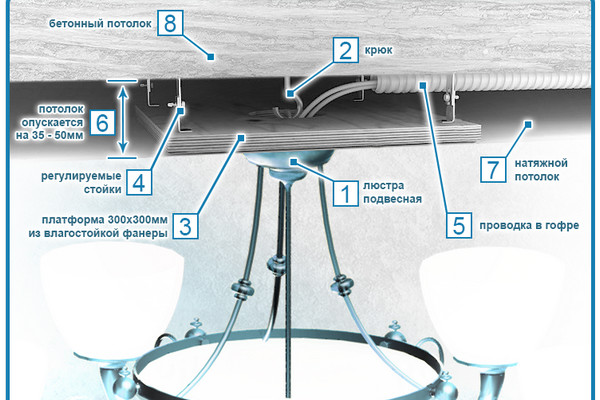


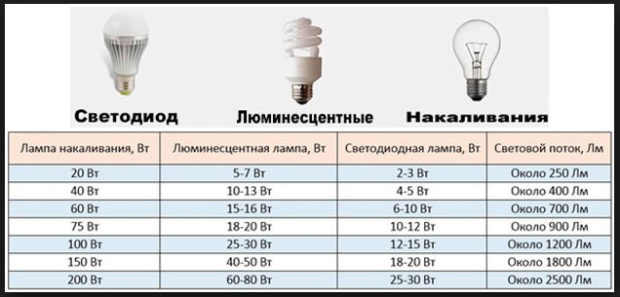
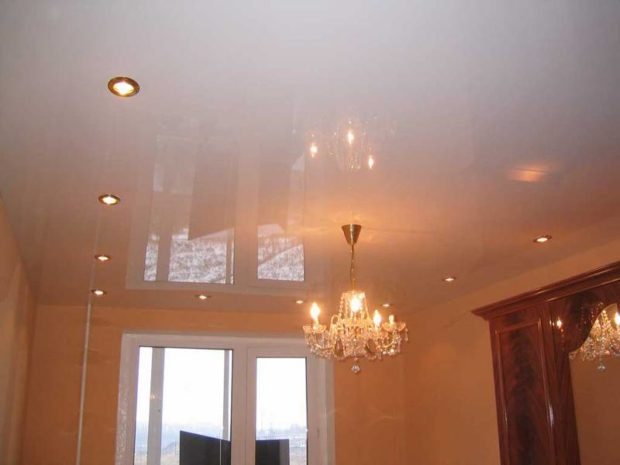
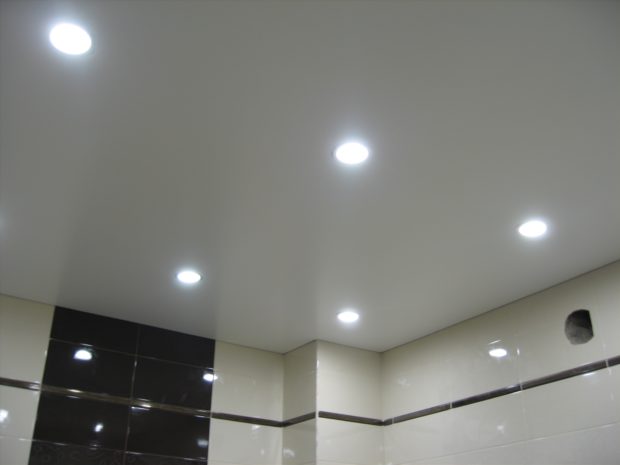

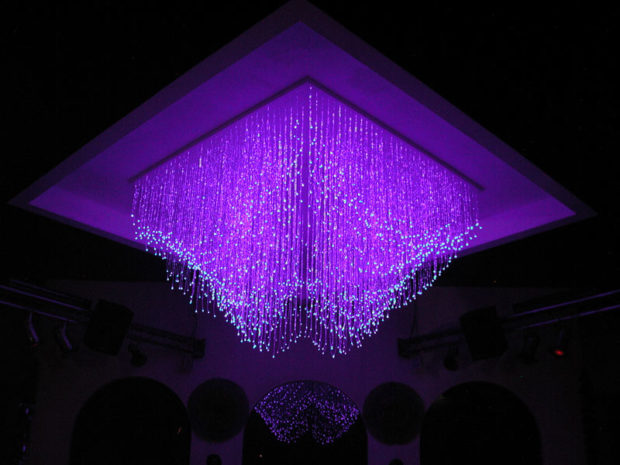
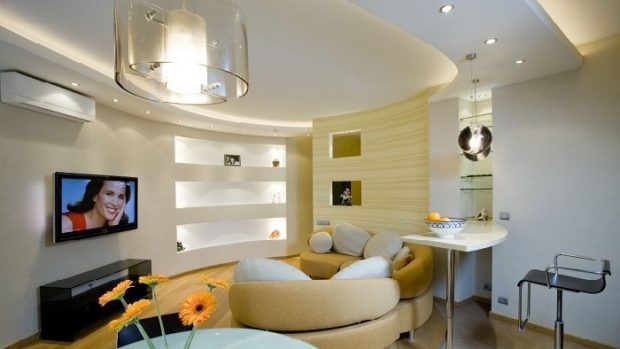
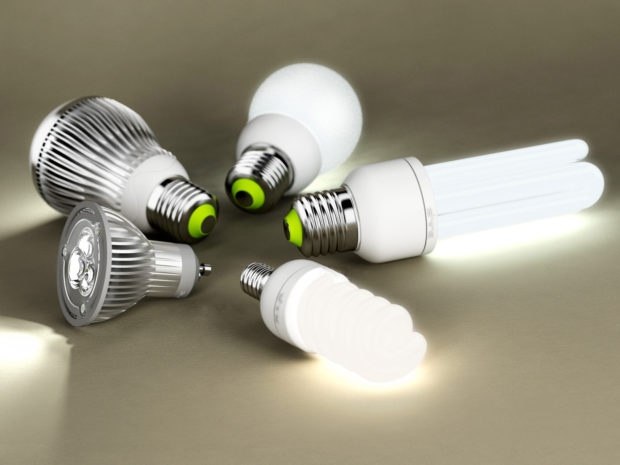
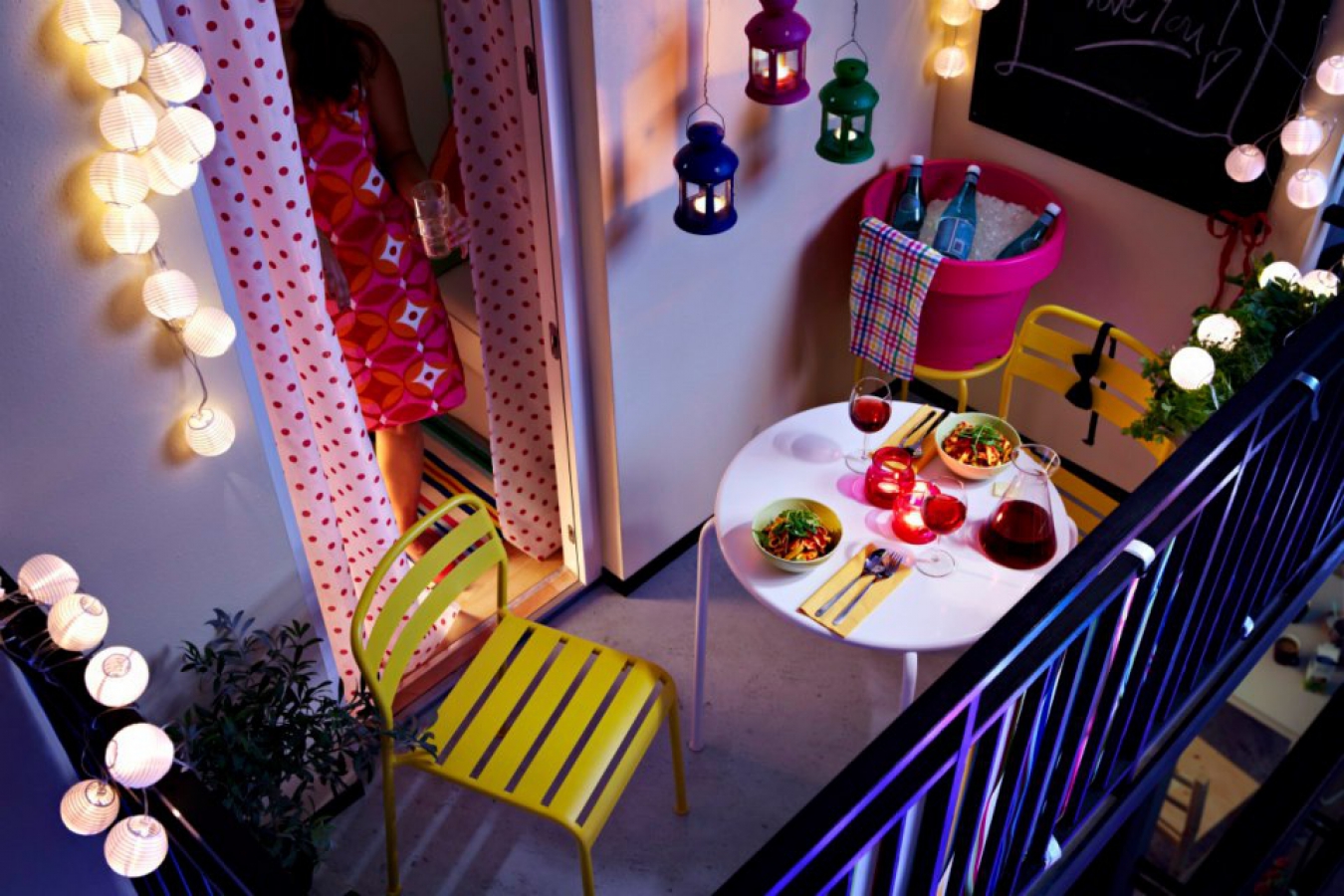
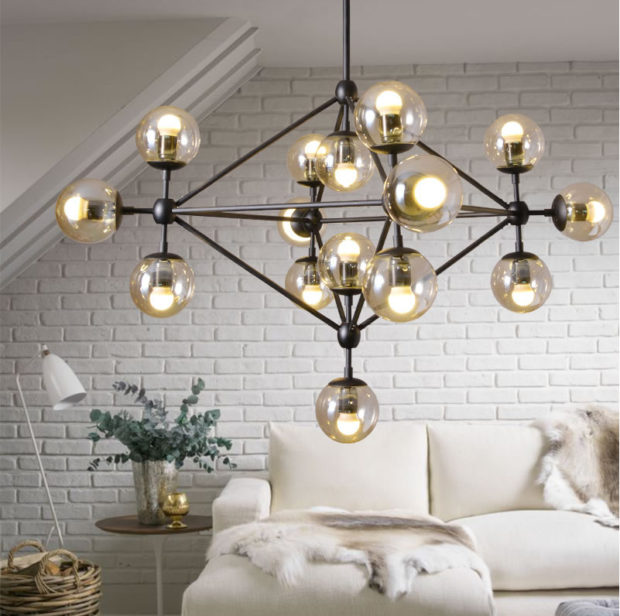
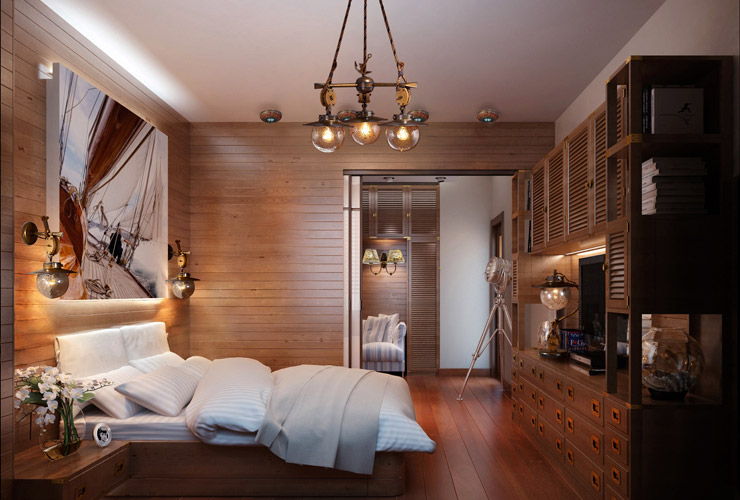
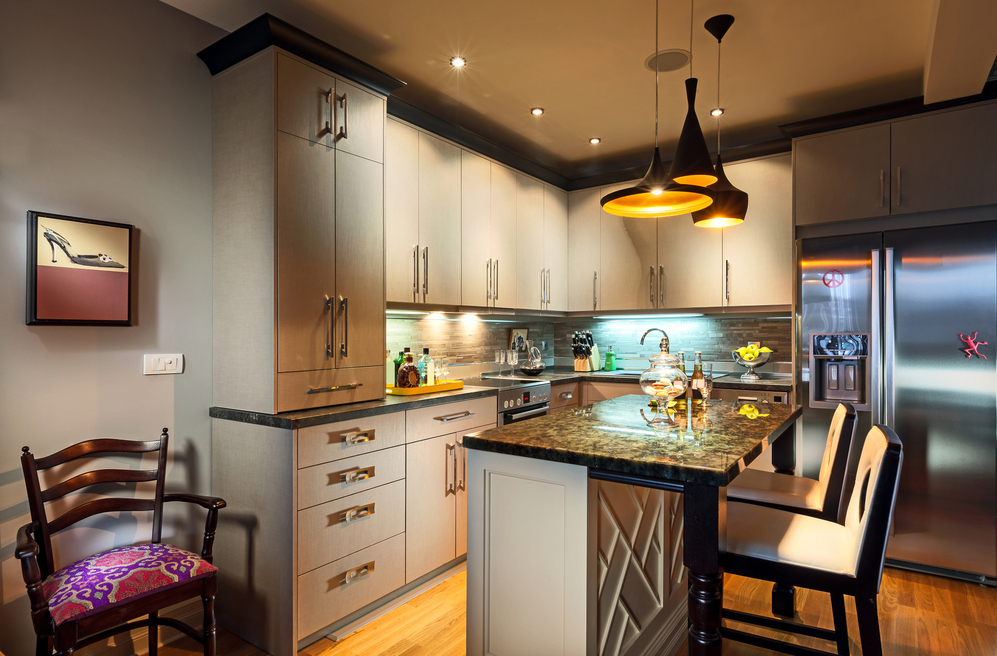
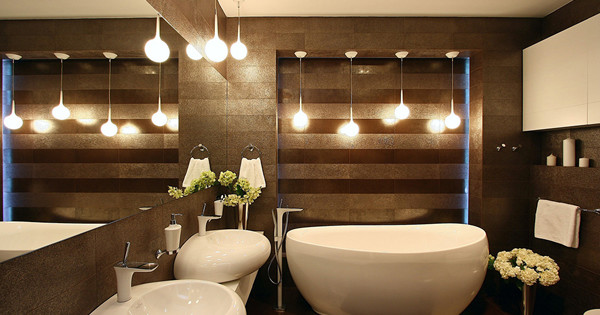
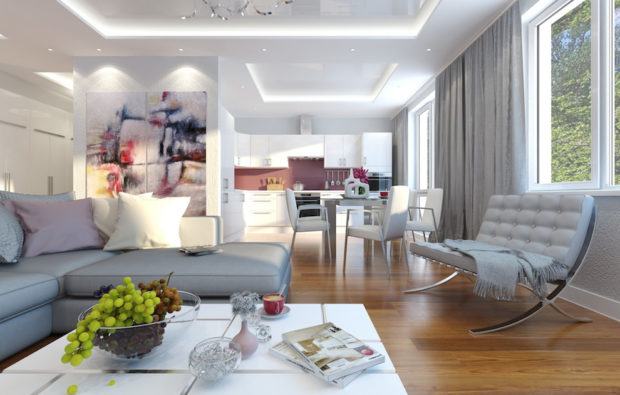
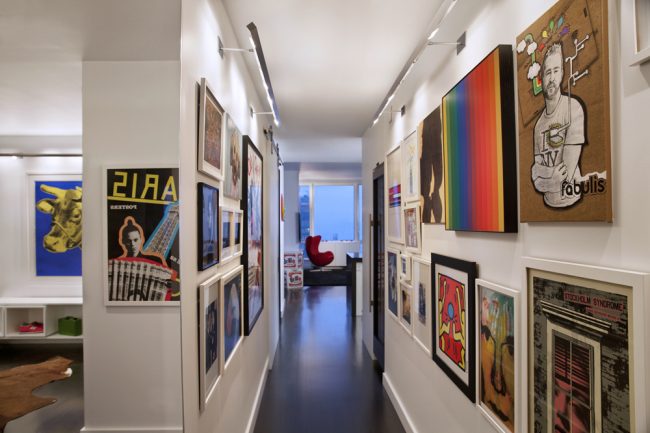
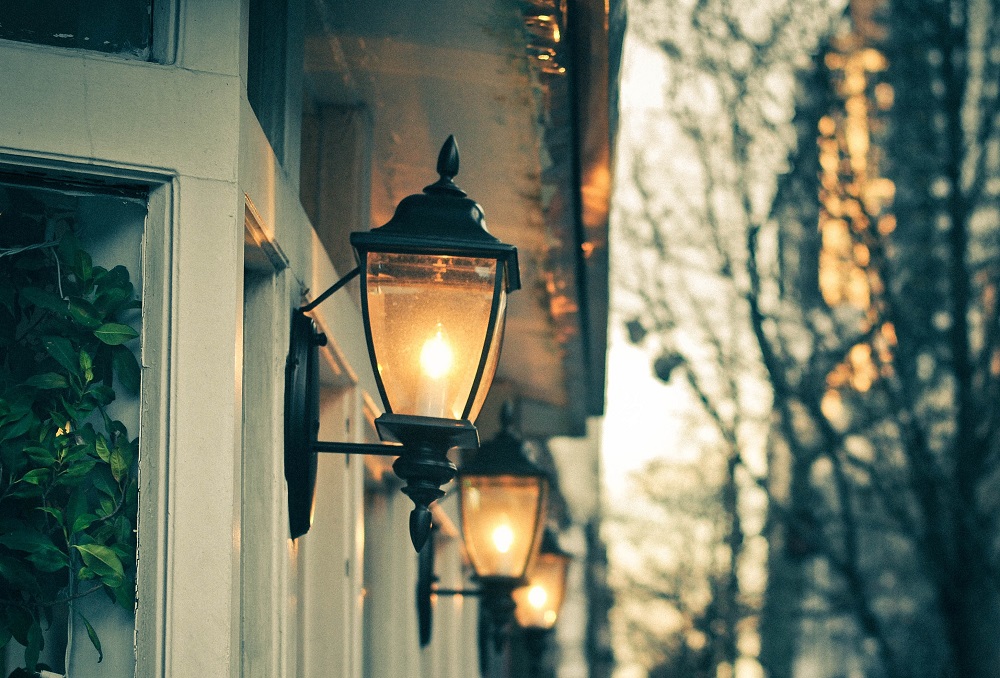
Thanks for the informative article! We have a stretch ceiling in almost every room in our home. Now we are doing repairs in the bedroom and, again, a stretch ceiling. We are planning an LED strip around the perimeter of the room, and LED spotlights in the center of the ceiling in view of the pattern. Can you tell me, for a stretch ceiling, only built-in lamps of this principle are suitable? Or can I take frameless invoices?
Good afternoon. We are forced to remove the link, but we do not recommend such lamps in the bedroom - they are office. They won’t bring you comfort.